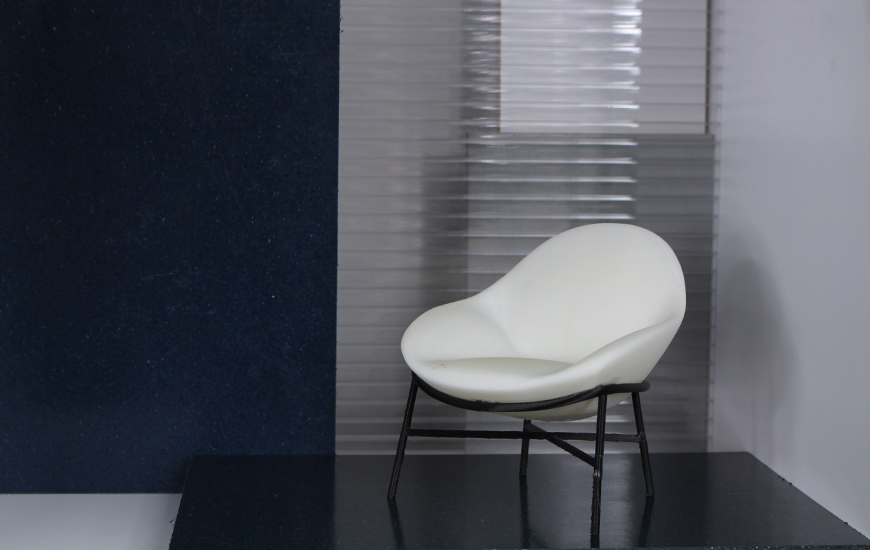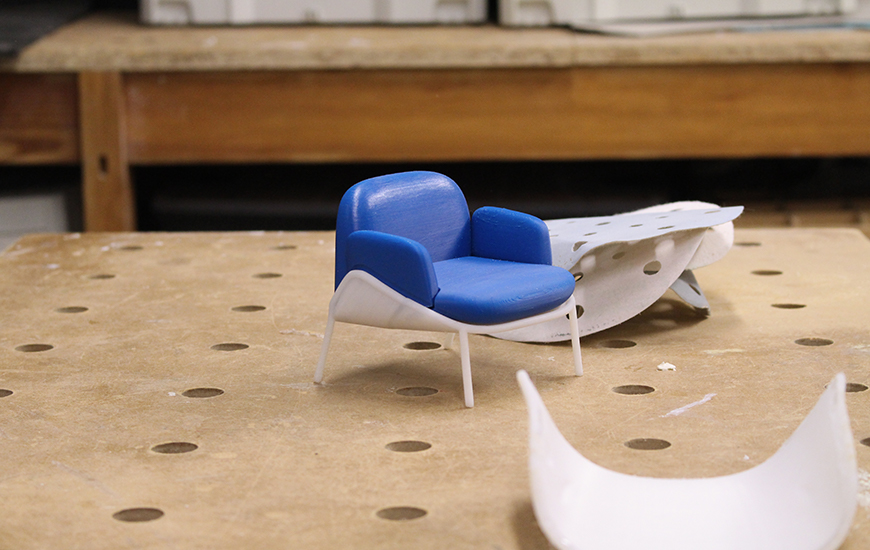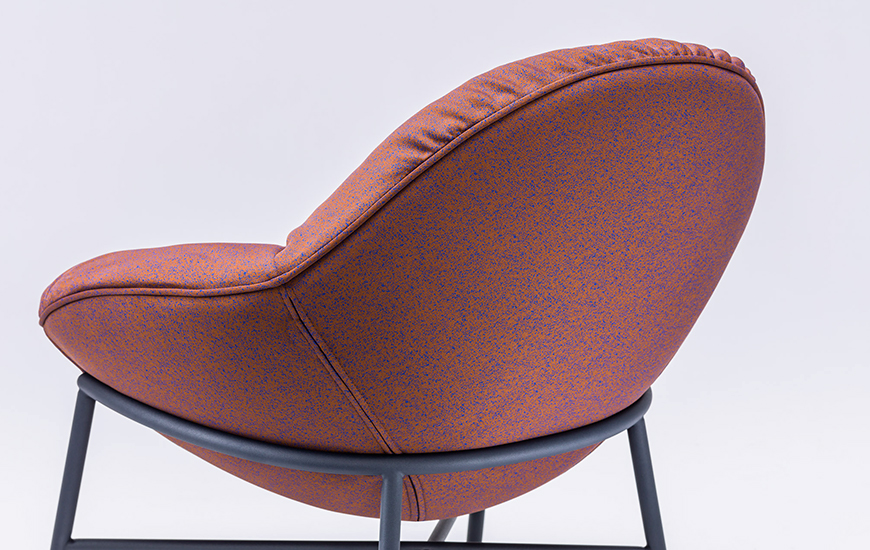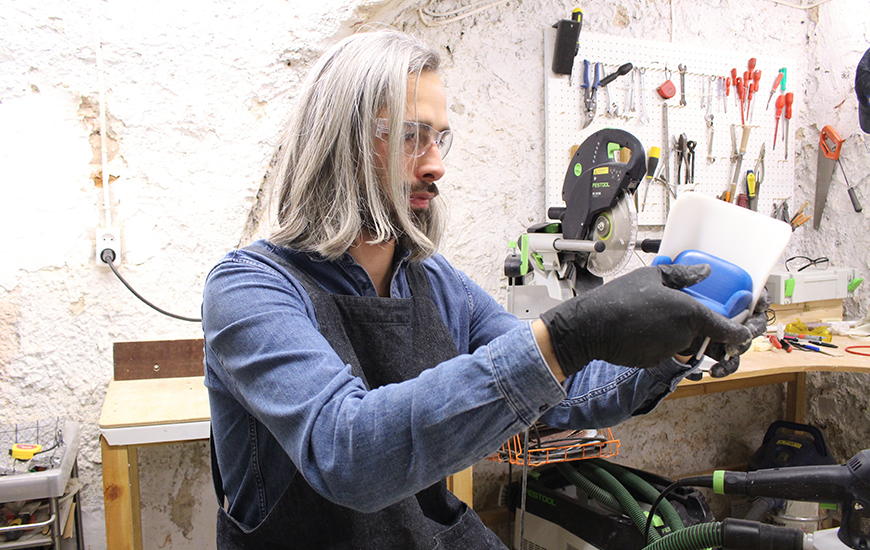A 3D Printer in Furniture Design Process
“Creating art has always been a natural way of life for me. Both my parents were artists. But I’ve also had an inclination toward industrial design, toward technology”, says Krystian Kowalski, a designer working for leading furniture brands like MDD or Noti. “To evaluate my designs at early stages of creative process I use the Zortrax M200 3D printer. You just can’t do this kind of work effectively without it”, he adds.
Industrial Art
Kowalski is a graduate of Warsaw Academy of Fine Arts and London Royal College of Art. His end of studies thesis was a skillfully designed chair. “It didn’t take long before I was designing furniture for the industry, creating products intended for the market”, says Kowalski. Working for the furniture business was something he enjoyed, but at the same time, it was a decent choice of career. “There are lots of internationally acclaimed furniture brands in Poland. Yet I don’t limit myself to this particular field. I have other projects in mind as well”, he claims. Modern furniture design takes both creative flair and technical knowledge. There are lots of wonderfully shaped chairs, coffee tables and sofas at various exhibitions around the world that will never reach the market for a number of reasons. They are there to admire, but for customers to like them and to actually buy them, they would have to be comfortable to use, durable, and reasonably priced. Quite often, they simply aren’t.
Modern furniture design takes both creative flair and technical knowledge. There are lots of wonderfully shaped chairs, coffee tables and sofas at various exhibitions around the world that will never reach the market for a number of reasons. They are there to admire, but for customers to like them and to actually buy them, they would have to be comfortable to use, durable, and reasonably priced. Quite often, they simply aren’t. “You have to think about various things beside the looks if you want your product to hit the market. Truly, you need to have the entire production strategy, logistics, availability and cost of intended materials taken into account right from the get go, when you design a piece of furniture”, explains Kowalski. According to him, it’s all about striking the right balance between art and technology. And you need to get rid of design flaws as early as possible. With the whole assembly line up and running, on-the-fly adjustments can get quite expensive. That’s where the Zortrax Ecosystem comes into play.
“You have to think about various things beside the looks if you want your product to hit the market. Truly, you need to have the entire production strategy, logistics, availability and cost of intended materials taken into account right from the get go, when you design a piece of furniture”, explains Kowalski. According to him, it’s all about striking the right balance between art and technology. And you need to get rid of design flaws as early as possible. With the whole assembly line up and running, on-the-fly adjustments can get quite expensive. That’s where the Zortrax Ecosystem comes into play.
The Ideas
For Kowalski a new furniture collection begins its life on a computer screen. Chairs, sofas, desks and tables are modeled in CAD software. “But there are things, flaws you can’t spot at the digital stage. You need a physical object. Something you can touch”, says Kowalski. Thus, the designer work with scale models. The optimal scale for furniture is 1:6. “You can also go for 1:10 when you work on tighter deadlines, but at a risk of missing something important. At 1:6 all mistakes made at the computer modeling stage become immediately apparent”, he explains. Real-world prototypes allow for fiddling with looks. How a piece of furniture would look like in various lighting conditions, how it would look like in different colors? “And of course how something behaves when you add gravity, which is quite difficult to realize in a virtual reality. What’s the point of a chair or a table when it can’t stand firmly on the ground?”, says the designer.
“You can also go for 1:10 when you work on tighter deadlines, but at a risk of missing something important. At 1:6 all mistakes made at the computer modeling stage become immediately apparent”, he explains. Real-world prototypes allow for fiddling with looks. How a piece of furniture would look like in various lighting conditions, how it would look like in different colors? “And of course how something behaves when you add gravity, which is quite difficult to realize in a virtual reality. What’s the point of a chair or a table when it can’t stand firmly on the ground?”, says the designer.
The Execution
Kowalski works mostly with Z-ABS and Z-ULTRAT. Usually, his models are not meant to be exhibited or shown to prospective customers, they are a tool for perfecting the design. “Z-ABS is precise and offers good quality to price ratio. When I work with concept models I don’t need sophisticated properties of other materials, so there’s no need to add unnecessary costs”, says Kowalski. But there are cases where he finds going for more resilient materials totally justified. “In a 1:6 scale, the usual issue with modeling furniture is a thin leg. Imagine a chair. A full scale chair has legs thick enough to sustain its own weight and the weight of the person using it. But with a scale model, legs’ diameter gets really small”, he explains. Hence for 3D printing small, yet demanding details, Kowalski uses Z-ULTRAT. “I think it works better with small diameters than Z-ABS. Perhaps it’s just the impression I get. Z-ABS usually works fine even with thin legs, but I simply feel more comfortable using Z-ULTRAT”, Kowalski adds.
“In a 1:6 scale, the usual issue with modeling furniture is a thin leg. Imagine a chair. A full scale chair has legs thick enough to sustain its own weight and the weight of the person using it. But with a scale model, legs’ diameter gets really small”, he explains. Hence for 3D printing small, yet demanding details, Kowalski uses Z-ULTRAT. “I think it works better with small diameters than Z-ABS. Perhaps it’s just the impression I get. Z-ABS usually works fine even with thin legs, but I simply feel more comfortable using Z-ULTRAT”, Kowalski adds. With Mesh, Oyster and various other successful furniture lines in his portfolio, Kowalski is reluctant to pinpoint his source of inspiration. “What inspired you is always a tough question. Tough, because I don’t sit and wait to be inspired by something, it doesn’t work that way for me”, he says. “It’s more about how I perceive the world around me, the developments in my field, the way it evolves. I keep track of what’s going on in furniture design worldwide and work hard to come up with something new, to contribute to office furniture, home furniture, you name it. That’s my professional fulfillment, making valuable contributions”, claims Kowalski. “The way I see it, I’m at work 24/7, constantly processing new ideas. That’s what it takes when you want to lead, not to follow”.
With Mesh, Oyster and various other successful furniture lines in his portfolio, Kowalski is reluctant to pinpoint his source of inspiration. “What inspired you is always a tough question. Tough, because I don’t sit and wait to be inspired by something, it doesn’t work that way for me”, he says. “It’s more about how I perceive the world around me, the developments in my field, the way it evolves. I keep track of what’s going on in furniture design worldwide and work hard to come up with something new, to contribute to office furniture, home furniture, you name it. That’s my professional fulfillment, making valuable contributions”, claims Kowalski. “The way I see it, I’m at work 24/7, constantly processing new ideas. That’s what it takes when you want to lead, not to follow”.
To read more about how Zortrax Ecosystem can aid designers in their work, go ahead and read our stories about Notaroberto-Boldrini and UAU Project.